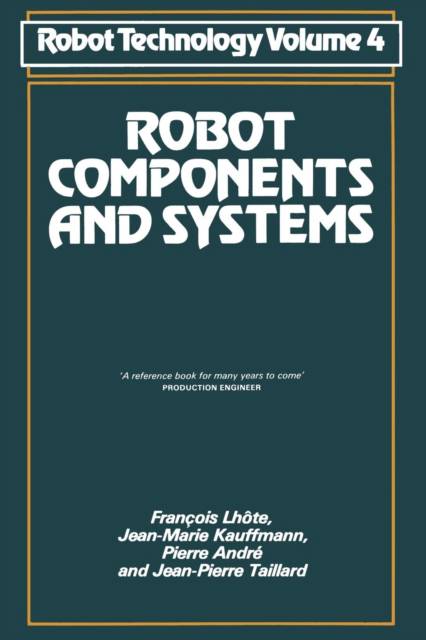
Door een staking bij bpost kan je online bestelling op dit moment iets langer onderweg zijn dan voorzien. Dringend iets nodig? Onze winkels ontvangen jou met open armen!
- Afhalen na 1 uur in een winkel met voorraad
- Gratis thuislevering in België vanaf € 30
- Ruim aanbod met 7 miljoen producten
Door een staking bij bpost kan je online bestelling op dit moment iets langer onderweg zijn dan voorzien. Dringend iets nodig? Onze winkels ontvangen jou met open armen!
- Afhalen na 1 uur in een winkel met voorraad
- Gratis thuislevering in België vanaf € 30
- Ruim aanbod met 7 miljoen producten
Zoeken
Robot Components and Systems
François Lhôte, Pierre André, Jean-Pierre Taillard, Jean-Marie Kauffmann
€ 83,95
+ 167 punten
Omschrijving
The contemporary industrial robot is the focal point of a wide variety of elements in modern technology. It is a collection of parts, some of which act as drives and some of which act as architectural materials that give the robot body strength. This book is a thorough inventory of the technologies involved and the way in which they meet and work together in order to produce a functional robot arm. The authors have striven to describe thoroughly the components that make up robot arms. This gives both the student and the practitioner a complete view of the principles involved in such components and the differences between existing technologies. However, it is not only the student who benefits from this approach but also the potential robot user who, at the moment, may be faced with a bewildering choice of combinations of different types of components in the robots that are available to him. For example, it is difficult for a production manager to appreciate the differences between robots that use direct current motors, stepping motors and pneumatic actuators. The authors have succeeded in structuring the book so that the reader can weigh up the pros and cons of these different techniques at whatever level of depth he requires. Certainly, the book aims to provide as much depth as there is in these topics without assuming a detailed knowledge of specialized areas of engineering.
Specificaties
Betrokkenen
- Auteur(s):
- Uitgeverij:
Inhoud
- Aantal bladzijden:
- 346
- Taal:
- Engels
- Reeks:
- Reeksnummer:
- nr. 4
Eigenschappen
- Productcode (EAN):
- 9781850914051
- Verschijningsdatum:
- 30/06/1987
- Uitvoering:
- Paperback
- Formaat:
- Trade paperback (VS)
- Afmetingen:
- 152 mm x 229 mm
- Gewicht:
- 467 g

Alleen bij Standaard Boekhandel
+ 167 punten op je klantenkaart van Standaard Boekhandel
Beoordelingen
We publiceren alleen reviews die voldoen aan de voorwaarden voor reviews. Bekijk onze voorwaarden voor reviews.











